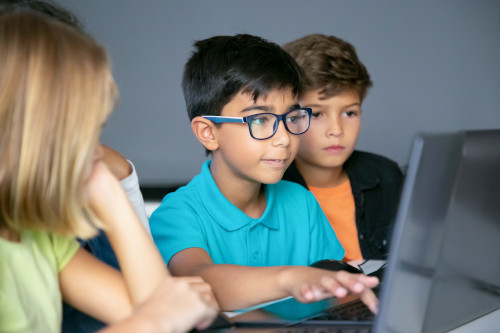Web filtering is undoubtedly an essential when it comes to school cybersecurity. However, when the service is not set up correctly or a number of blocked categories is way too high, it starts to annoy both staff, and kids. Let’s see how to use web filtering to stay safe out there on the internet and make full use out of it.
Starting with the basics, it makes sense to remind ourselves what CIPA is. The Children’s Internet Protection Act, signed into law in 2000, is a document that regulates the exposure of inappropriate content to children. To be precise, the content that shall be filtered or blocked is divided into 3 groups: obscenity, child pornography & content harmful to minors. To receive funding, an educational institution must follow the guidelines of the act. The easiest way to comply with it is to purchase a web filtering solution. Needless to say, K-12 schools must be CIPA compliant to use E-Rate discounts, but those schools and libraries that do not receive the fundings do not have this obligation.
Web filtering solutions work on a DNS level, blocking all unwanted websites: both malicious ones with viruses lurking around, and all kinds of explicit content. In a nutshell, the DNS system matches IP addresses and the names of the websites working as a phonebook of the Internet. DNS filtering, however, also categorizes the website to see if it belongs to any restricted groups. This part is usually customizable: you choose which type of sites you want gone (or vice versa – you create an Allow list, which contains only the resources you want your students, staff & guests to see, and everything else is blocked), and leave it be.
Now, here’s the main question – how can web filtering possibly be of harm for the kids? It protects them from things their minds are not ready for, it saves them from being hacked. However, sometimes blocking way too much content might limit the kids’ learning process. CIPA clearly states that content “harmful to minors” must be blocked, which sometimes is read as “block everything” by adults. Mary Beth Hertz, the art/tech teacher and technology coordinator at Science Leadership Academy at Beeber, a public high school in West Philadelphia, shared an opinion on blocking content for kids: “We limit their opportunities to succeed, explore their passions, and discover their strengths and talents.”
This part depends on the web filtering provider a school, a uni, a library or any educational institution chooses. Flexibility of blocked categories, unlimited Allow and Deny lists, AI and Machine learning used for categorisation – all that characterizes a compliant vendor for the education sector. A trustworthy vendor would not over-filter content, but give their clients plenty of room for customizing their own vision of what shall and shall not be blocked.
An opposite opinion states that in the era of cybercrime and online fraud, cybersecurity, even on kids’ devices, is essential. Add easy access to pornographic and other explicit resources to that, and you have a blank canvas of a child’s phyche to corrupt. Both opinions have their right to exist, both seem fair. The key to teaching kids internet hygiene is to balance between those. CIPA leaves plenty of room for interpretation, so it’s important to not go to extremes and be moderate. And look for a web filtering provider that gives you such an opportunity.
As an alternative to a conclusion, here’s a checklist of features to look for in a web filtering vendor:
-Allow List Only feature (only allow access to the websites the admins approve of);
-AI and Machine Learning used by vendor (to make sure the service is flexible and adaptive);
-Possible to set up on router (to monitor the whole network);
-Possible to set up on devices (to monitor particular devices);
-Database of large size (about 100 million);
-SafeSearch and Restricted mode for YouTube;
-Remote management features (to deploy in minutes and monitor activity);
-All resources merged into categories (to customize filtering policies);
-Statistics and logs to monitor students’ activity);
-Fully CIPA compliant (to avoid wasting time on extra checking).
Content provided by:

- CoSN: The Basics - March 28, 2024
- #CoSN2024 Remote—How to Do It - March 28, 2024
- CoSN IT Leader Spotlight: Don Wolff - March 6, 2024

